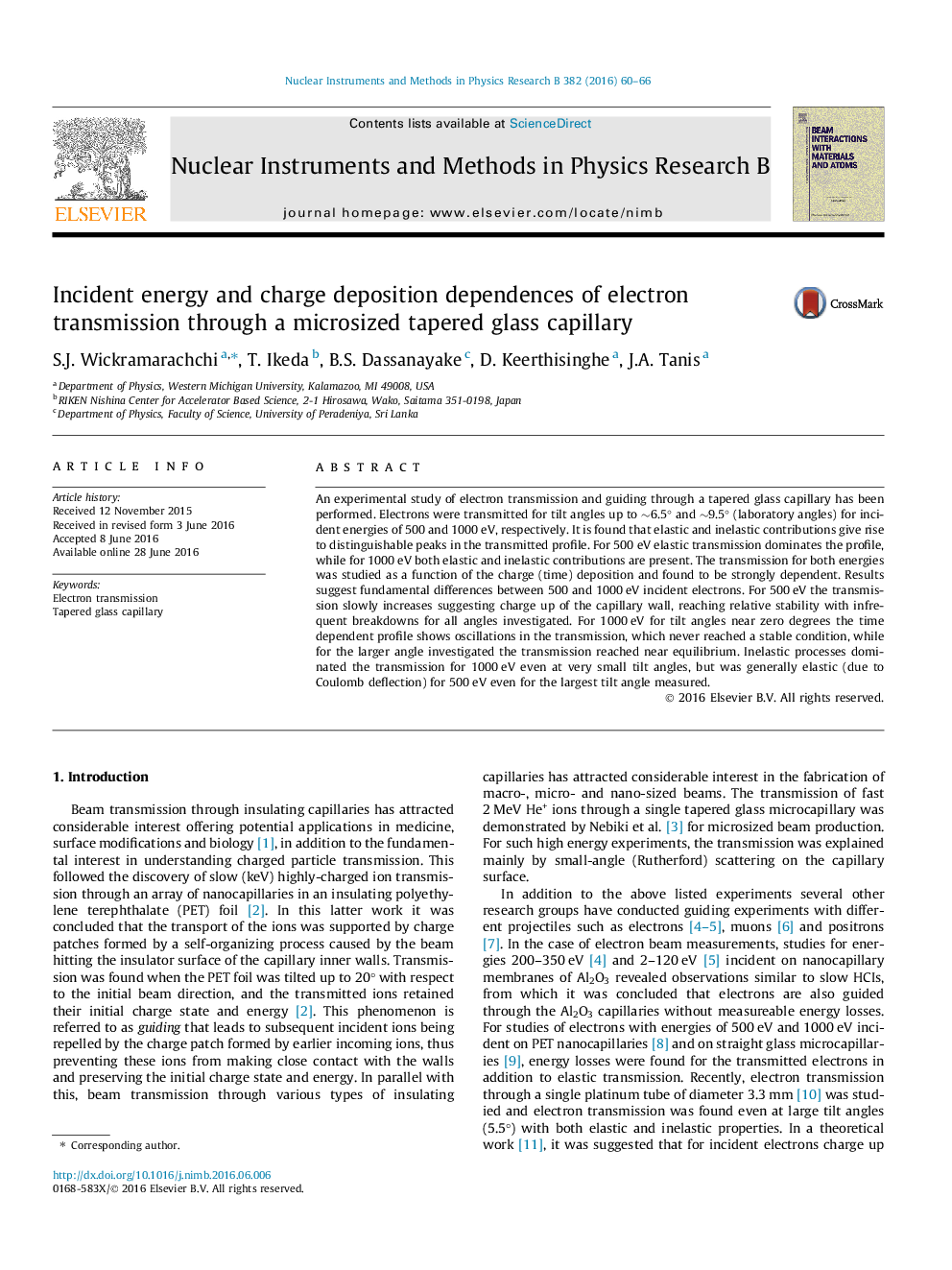| Article ID | Journal | Published Year | Pages | File Type |
|---|---|---|---|---|
| 1679512 | Nuclear Instruments and Methods in Physics Research Section B: Beam Interactions with Materials and Atoms | 2016 | 7 Pages |
Abstract
An experimental study of electron transmission and guiding through a tapered glass capillary has been performed. Electrons were transmitted for tilt angles up to â¼6.5° and â¼9.5° (laboratory angles) for incident energies of 500 and 1000 eV, respectively. It is found that elastic and inelastic contributions give rise to distinguishable peaks in the transmitted profile. For 500 eV elastic transmission dominates the profile, while for 1000 eV both elastic and inelastic contributions are present. The transmission for both energies was studied as a function of the charge (time) deposition and found to be strongly dependent. Results suggest fundamental differences between 500 and 1000 eV incident electrons. For 500 eV the transmission slowly increases suggesting charge up of the capillary wall, reaching relative stability with infrequent breakdowns for all angles investigated. For 1000 eV for tilt angles near zero degrees the time dependent profile shows oscillations in the transmission, which never reached a stable condition, while for the larger angle investigated the transmission reached near equilibrium. Inelastic processes dominated the transmission for 1000 eV even at very small tilt angles, but was generally elastic (due to Coulomb deflection) for 500 eV even for the largest tilt angle measured.
Related Topics
Physical Sciences and Engineering
Materials Science
Surfaces, Coatings and Films
Authors
S.J. Wickramarachchi, T. Ikeda, B.S. Dassanayake, D. Keerthisinghe, J.A. Tanis,
